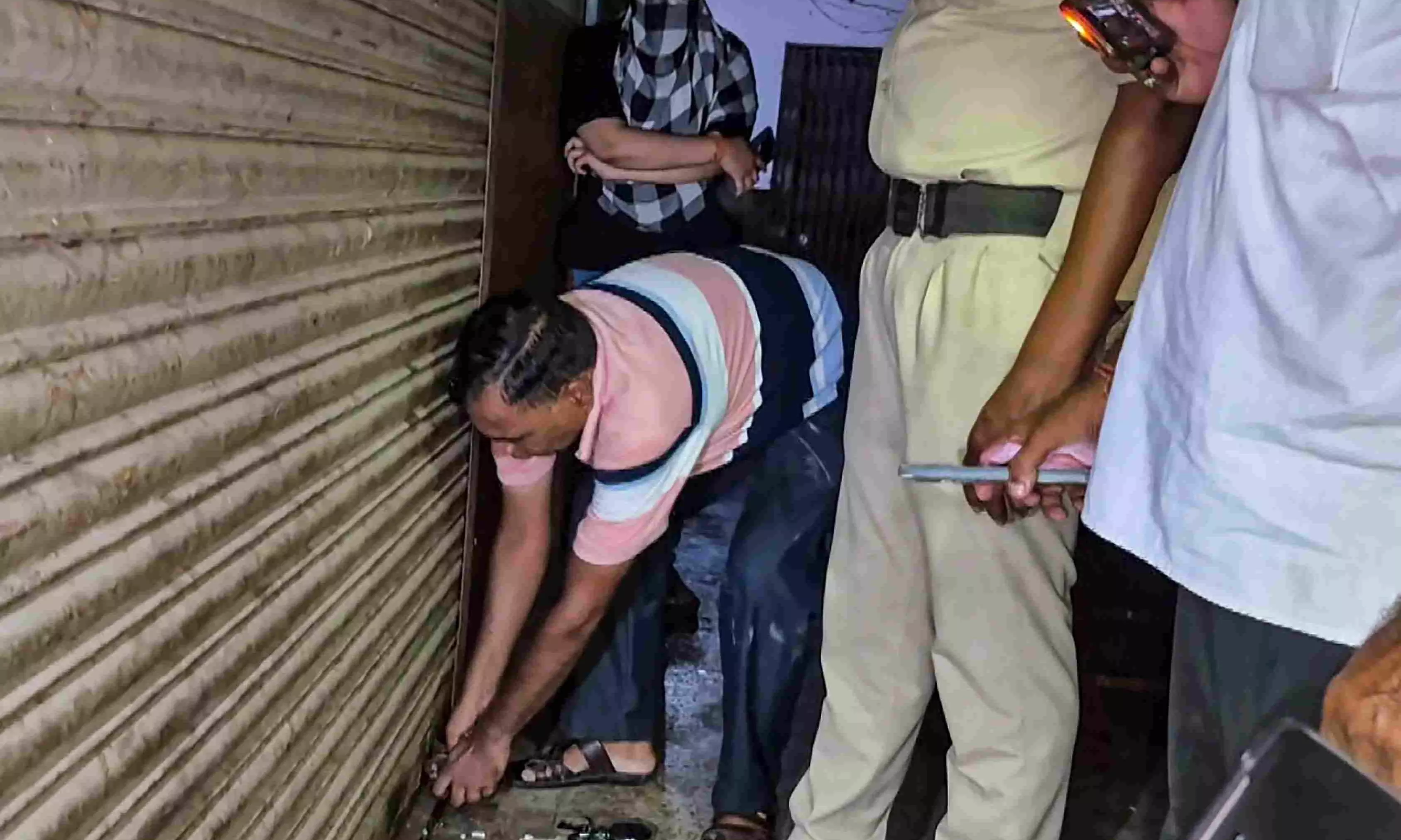
Officials seal office of a firm, that allegedly supplied Coldrif cough syrup, after a raid, in Jabalpur, Madhya Pradesh, on Oct. 5, 2025. The Madhya Pradesh police have formed a special investigation team (SIT) to probe the death of 14 children in Chhindwara due to suspected renal failure, linked to the consumption of a toxic cough syrup, officials said. Photo: PTI
Why cough syrup tragedy exposes India's chronic drug regulation crisis
CDSCO and state drug control departments have been struggling with severe staff shortages, corruption, poor infrastructure; 60% drug inspector posts remain vacant

When 17 children died in Madhya Pradesh in October 2025 after consuming a Tamil Nadu-made cough syrup, it was not an isolated failure, it was another symptom of India’s chronically weak drug regulatory system.
For years, the Central Drugs Standard Control Organisation (CDSCO) and state drug control departments across India have been struggling with severe staff shortages, corruption, and outdated testing infrastructure.
Despite repeated warnings from parliamentary committees, about 60 per cent of drug inspector posts remain vacant, leaving hundreds of districts without proper surveillance.
“The number of drug inspector posts is very inadequate across India for several years now. Even after the Mashelkar Committee’s recommendations in 2003 for building central and state-level infrastructure, most states are still lagging behind. The crisis is looming but we are failing to react even after decades,” Dr D Roy, former deputy drug controller of India told The Federal.
Overworked drug inspectors
Sources told The Federal that the CDSCO, the country’s apex drug regulatory body, is functioning with nearly 40 per cent of its sanctioned posts for drug inspectors lying vacant for over a decade now.
Also read: Tamil Nadu bans 'Coldrif' cough syrup after 11 child deaths in MP, Rajasthan
MS Tharanivendhan, a member of the Parliamentary Standing Committee on chemicals and fertilisers, told The Federal that despite repeated warnings, the Union government has failed to fill hundreds of vacancies.
“The committee flagged this as a matter of national concern last December. Out of the total positions, barely 504 inspectors are in place across 750 districts. That’s one officer for nearly 1.5 districts,” Tharanivendhan said.
“The Centre filled just 49 posts last year, while over 200 remain vacant,” he added.
Quality compromised
The shortage means overworked inspectors are forced to monitor thousands of pharmaceutical manufacturing units, compromising the frequency and quality of inspections. According to experts, this directly affects drug safety, allowing substandard or adulterated medicines to slip through the cracks, sometimes with fatal consequences.
Also read: SIT to probe 14 cough syrup deaths in MP; doctors threaten stir over arrest
While the CDSCO’s limitations have long been known, the situation in several states is equally grim.
State regulatory bodies
In Tamil Nadu, the drug control administration has been effectively headless since June, even as it oversees 365 drug manufacturing units, thousands of pharmacies, wholesale dealers, and blood banks. A combination of bureaucratic red tape, corruption, and the government’s failure to promote officers in time has left the department without leadership.
In Tamil Nadu alone, out of 25 sanctioned posts of assistant directors, at least two are vacant, along with 10 drug inspector positions.
Also read: CDSCO to initiate serious action against Coldrif makers following 14 deaths in MP: Report
According to a 2019 report on drug regulation in India by the legal researchers Shree Agnihotri and Sumathi Chandrashekaran, many states reported that their testing labs remain largely unused. Uttarakhand, with a stated testing capacity of 750 samples per year, tested only 226 samples between April 2015 and January 2019.
Experts warn that such institutional weakness is visible both at the national and state levels, posing a grave risk to public health.
Corruption, red tapism and staff shortage resulted in deaths and suspension of officials across India.

